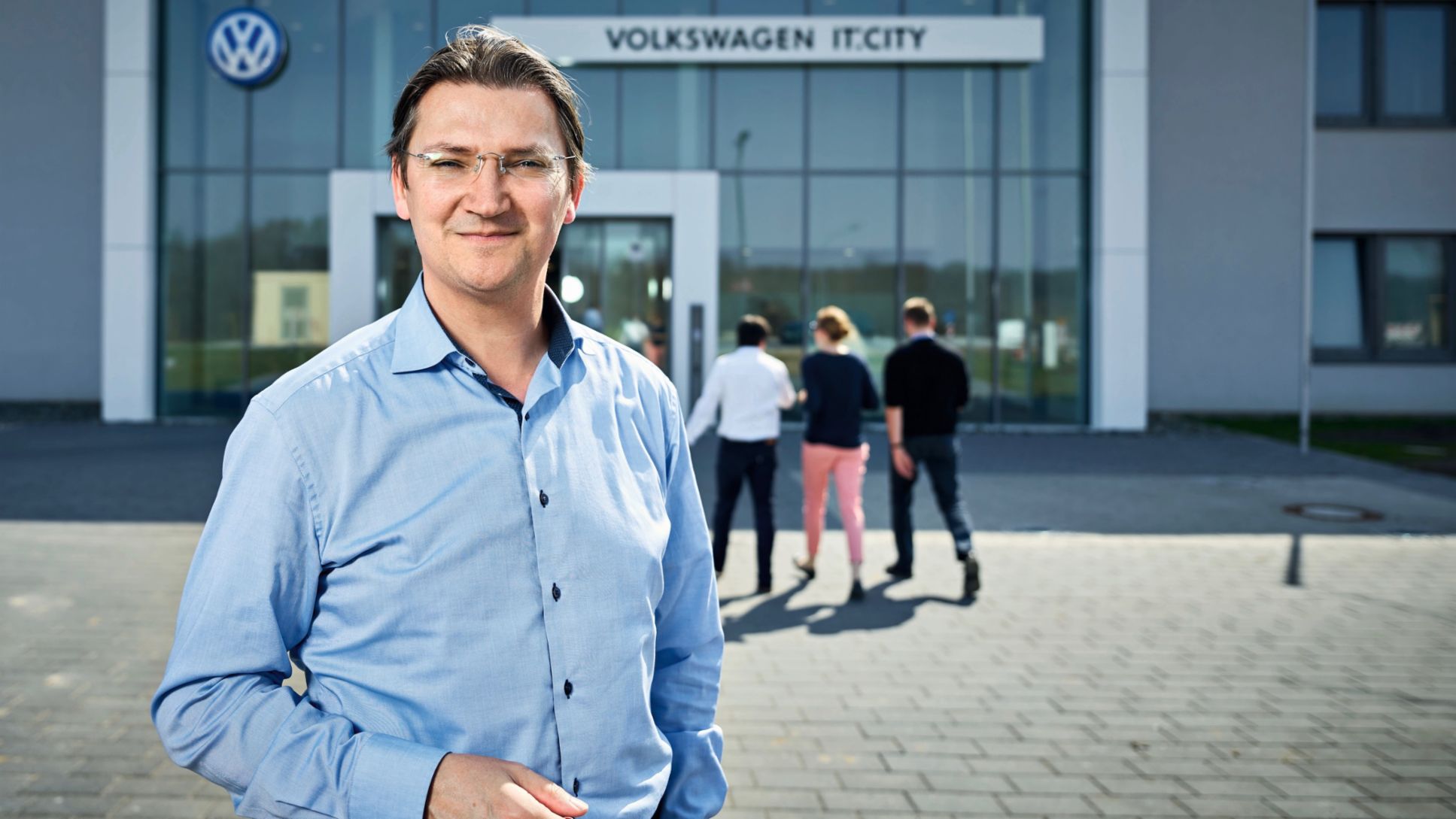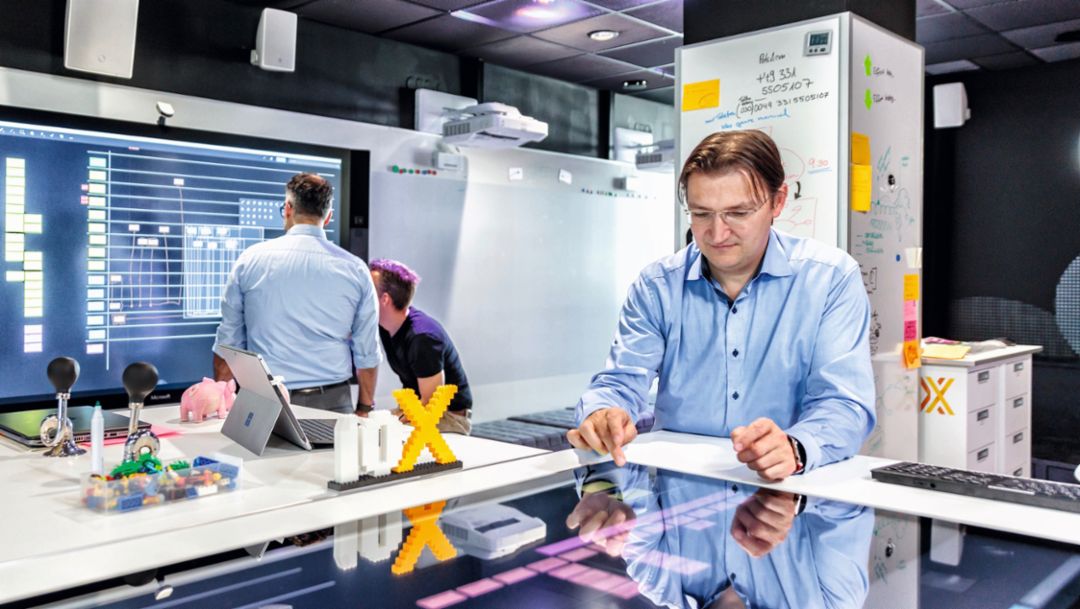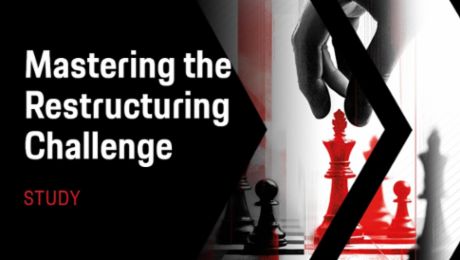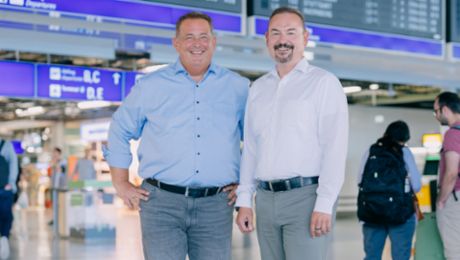Do you still remember your first car?
Johann Jungwirth: Of course. My first car was a milestone in my life. I got my license right at 18 and bought a red Golf TDI. Getting in and driving wherever I wanted to go—that was an incredible feeling of freedom, which I loved.
Will future generations have a chance to know this feeling?
I think the people who come after us will have a different mindset. They may well feel sorry for their parents and grandparents for still having to drive. For the next generation it will be perfectly natural to spend time on the road doing more useful and appealing things than operating the steering wheel and pedals. Self-driving cars will therefore also be designed very differently than is the case today.
How will the designs change?
The interior is the new exterior. The interior will be where the action is—for some people, quite literally. Cars of the future will have the chance to be rehearsal rooms, fitness studios, lounges, movie theaters, and offices. We’ll be able to design them as freely as rooms in our own homes. I view that as an enormous opportunity for our brands, especially in the high-end sector.
So you don’t think we’ll lose out on fun when cars drive on their own?
Let’s turn the question around: Do you enjoy sitting in traffic jams? That time could be spent in other ways. For everyday needs it will make sense to have several different means of transport, and selfdriving cars will play a major role. Therewill also be opportunities for people who like to take the wheel themselves. I think customer facilities like the Porsche Experience Centers can be a model for what driving pleasure might look like in the future.
And what will traffic be like in tomorrow’s cities, let’s say in the year 2030?
There will be regional differences. In some cities, 80 percent of transportation will consist of on-demand mobility services. Large fleets of self-driving electric vehicles will take the great majority of people and goods from A to B. Their nearly silent drive systems will make cities more peaceful. Transportation will become safer and more comfortable. That’s simply the right solution with respect to efficiency—meaning the number of cars and the need to reduce congestion. I also think that cities will be much more active in determining how much traffic they want and how it should be divided among services such as ride-hailing, ride-pooling, and public transportation. Some cities will probably also shift entirely to fleets of self-driving electric vehicles.
Less congestion due to fewer cars— does that threaten the business models of high-volume manufacturers like Volkswagen?
Current business models will have to change, that’s true. But generally speaking, they will remain viable in the future. Take Berlin as an example. A study of ours has found that the city would need only about one-seventh of its current number of cars if it converted entirely to mobility as a service. These vehicles would essentially be used all the time. They would have service lives of around two years and would then be replaced. If vehicles are replaced seven or eight times as often as today, that would compensate for the reduction in absolute numbers. And there will also be new groups of customers, including people with disabilities, senior citizens, blind people, and children—who will increase the total demand for car travel. But production costs and therefore the price for end customers will decrease. That means it will be very attractive to switch from public transportation to mobility-on-demand services. Nevertheless, there will still be people who have their own car—or several of them.
Many people will no longer own cars themselves—how will that affect customer loyalty?
Platforms will be key, that’s clear. We want to create a highly attractive ecosystem for our products that gives people more value so they simply don’t want to leave. Apple, for example, has an ecosystem with a very high exit threshold. If you want to enjoy the benefits of those products, the best thing to do is make consistent use of that provider. We will be doing something similar, as I see it. The RIO digital platform already exists for Volkswagen Truck & Bus, MAN, Scania, and Volkswagen Commercial Vehicles. This B2B eco system enables shipping companies to manage complete fleets and their transport services digitally—including our competitors’ vehicles. That is a huge advantage. Another reason it works so well is that the hardware interface for the trucks’ telematics boxes is standardized. Whereas shipping companies used to need different systems for managing and monitoring orders for their fleets, they can now simply install RIO boxes in trucks of other brands and work completely in our system. We need this type of platform for our eight car brands as well. That’s something we’re working on right now.
How will that benefit customers?
For them everything will be as simple and convenient as possible. I’ll give you an example. When you move within our ecosystem and decide to buy a car from the next generation of the same brand or a different product from the Group, you’ll save two hours configuring the car because your preferences and settings will be saved in your profile—everything from the seat to the air conditioning and the ambient lighting. Even in rental cars. The intelligent virtual assistant knows the content of previous conversations and accesses your next destination from your digital calendar. All of that happens while you’re still walking up to the car. Using machine learning and deep learning, we’ll handle this whole process for our customers who still regard it as a necessary evil. And of course you will no longer have to deal with parking, charging, or washing the car. By the way, I could well imagine incorporating thousands of urban dealerships into our network to create a dense infrastructure of service hubs for our fleets of self-driving vehicles and their mobility services.
What still has to happen for that to become reality?
It’s an enormous project, of course. In the past we perfected the hardware, and we’re at the top of our field in that area. Now it’s a matter of raising our software and services to the same level. That means we have to build up original digital organizations throughout the entire Group, which is what we are already doing. It’s important for these units to really be created as companies for software and services. And as true digital companies they need the right culture from the word go, as well as the right core areas of expertise including software and platform programming, artificial intelligence, and quantum computing. In parallel to that we need to transform our core organization.
And finally, why are all the ceilings in these rooms black?
This area of the IT City uses Silicon Valley as its model. For example, we all work together here in an open collaboration space, including the entire management team. This proximity accelerates the pace of communication and decision-making. There are also rooms where people can discuss things or make phone calls in peace. It’s about coming up with new ideas. That’s why I like our black ceilings. They remind me of the infinite night sky, and therefore also seem much higher.





